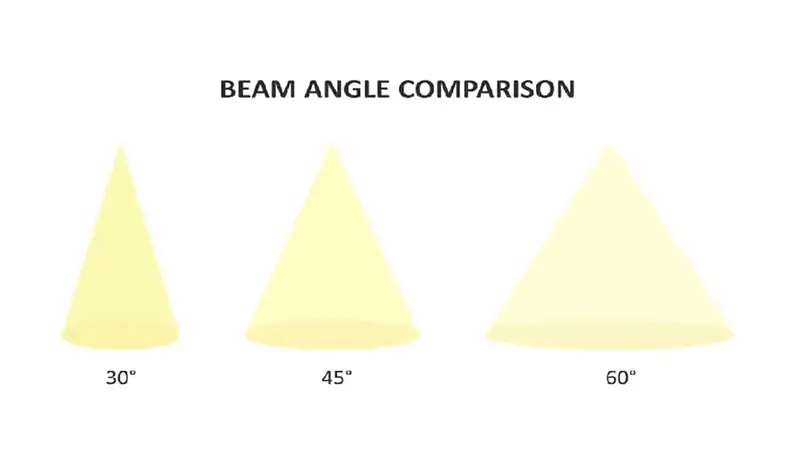
The beam angle is an angular expression that expresses how light emerges from a light source. Helps you optimize the light coverage of your home or building. Our modern lighting fixtures are all about beam angle and light diffusion. It is closely related to our life。
Anything that produces light has a beam angle. For example, if you pick up a flashlight and move it closer or further away from a wall, the size of the light will change. The closer the distance, the more focused or intense the beam becomes. As you hold the flashlight further away, the beam gets wider.
The level of brightness produced by the flashlight has not actually changed. It’s still as bright as before, it just scatters the light differently. So, if you want a brighter flashlight, choose one with a wider beam angle and higher brightness.
What is Beam Angle?
Beam angle refers to the spread of light emitted from a light source. It determines the coverage area and intensity of the light. A wider beam angle will result in a more diffused light, but the light will also be less intense. Vice versa, narrower angles will produce less spread due to higher light intensity.
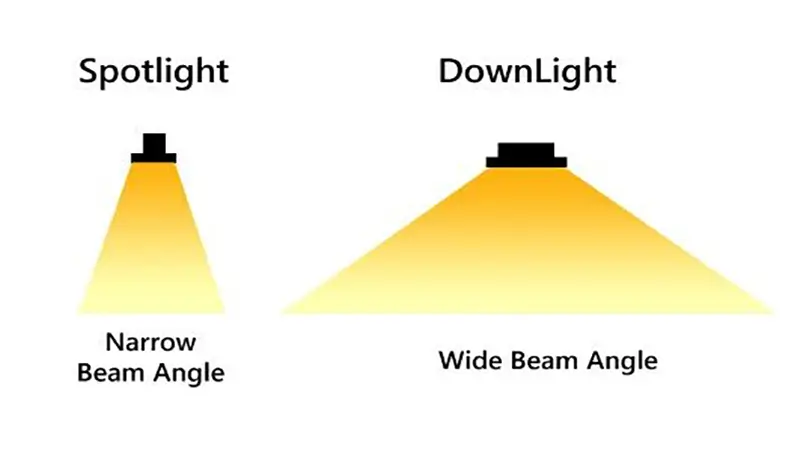
What is 120 Beam Angle?
120 refers to the spread angle of the light emitted by the light source. A 120° beam angle is considered a wide beam angle. This means that it spreads at a wide angle and illuminates a larger area. Make it useful for lighting larger areas or to create an overall uniform lighting effect.
What Does Narrow Beam Angle Mean?
A narrow beam angle refers to a bulb with a beam angle of less than 30°. There are of course finer beam angle categories such as spot or narrow beam angles.
Common Beam Angles
There are two methods of referencing the beam angle. One uses angular units such as 10°, 60°, 120°, etc. Other use of terms such as narrow-angle, point angle, wide angle, wide angle, etc.
| Number | Beam Angle (°) | Description |
| 1 | 10° – 18° | Very Narrow |
| 2 | 18° – 29° | Narrow |
| 3 | 29° – 46° | Medium Narrow |
| 4 | 46° – 70° | Medium |
| 5 | 70° – 100° | Medium Wide |
| 6 | 100° – 130° | Wide |
| 7 | 130° or more | Very Wide |
Why is Beam Angle Important?
The beam angle determines the distribution of light and affects the overall lighting of the space; the larger the angle, the larger the area covered, and vice versa. It affects the visibility, mood, and function of lighting installations.
How to Measure Beam Angles?
Here is a simple trigonometric formula to calculate beam angles (beam spread).
Angle = 2* Tan-1 [Beam Spread / Light Distance]
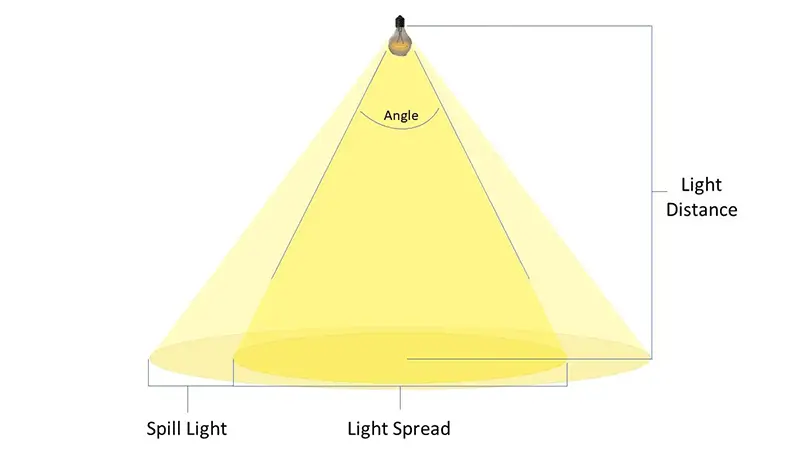
The beam spread here is 50% of the total light output; any light outside the center of this concentration is called “spill light” or “beam field”. Generally, when buying lamps, the beam angle is marked, and we don’t need to calculate it.
What do I Need to Consider when Choosing a Beam Angle?
You now have a rough idea of the importance of beam angle. So how to choose the best beam angle for your building, we need to consider the following factors such as ceiling height, the required light distribution, and the specific requirements of the application.
Lighting Purpose
You’ll need to identify lighting purposes with your lighting project, but traditionally there are three types of lighting.
- Ambient Lighting – Diffuse lighting is used to illuminate the entire room.
- Accent Lighting – Focused and indirect lighting is usually directed at a wall.
- Task Lighting – Focused and direct lighting accentuates work areas.
- Generally speaking, ambient lighting requires a wide beam angle, while task lighting and accent lighting require a narrower beam angle.
Building Type
There are two key construction types when beam angle in lighting needs to be considered,
- Residential Building
- Commercial Building
Residential buildings pay more attention to the uniform lighting of each room. So, placing a wide-angle light right in the center of the room is usually sufficient. But a commercial building hotel or restaurant will focus on effectively lighting a large floor area. They require medium to narrow-angle light distribution over a large ceiling area.
Lighting Type
The luminaire is one of the most critical factors in beam angle selection. Usually mounted on a wall or ceiling. The light fixture can change the beam angle of the bulb, you need to choose the installation method. Suspended chandeliers typically reduce the angle, while recessed fixtures may increase the angle.
Ceiling Height
Consider the installation height of the light fixture. Lower ceilings may require wider beam angles to cover more area, while higher ceilings may benefit from narrower beam angles for focused lighting.
Area Size
Consider the size of the area you want to light. Smaller spaces may require narrower beam angles, while larger areas may benefit from wider beam angles to provide adequate coverage.
How to Choose the Beam Angle?
The ideal beam angle depends on the purpose of the lighting installation, primarily the lighting application. For focused lighting, narrower beam angles such as 15-30 degrees are suitable, while wider beam angles of 60-120 degrees are suitable for general ambient lighting.
Beam Angle for Residential Building
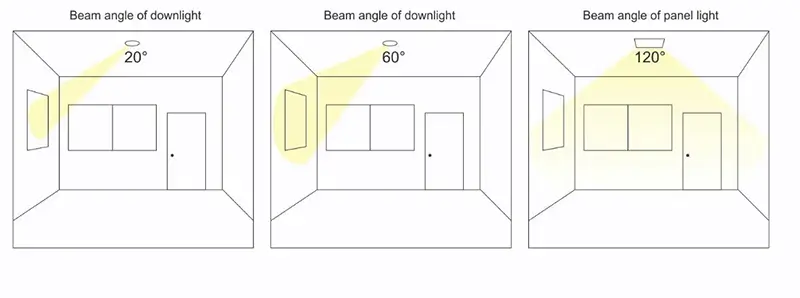
Residential buildings have lower ceilings and smaller areas. We can use the same beam angle for houses and apartments. For focused lighting, narrower beam angles such as 15-30 degrees are suitable, while wider beam angles of 60-120 degrees are suitable for general ambient lighting.
The living room area is relatively large. Wider beam angles (anything higher than 60°) are recommended to cover living rooms. A narrower light angle is recommended for house stairs or wardrobes.
Beam Angle for Commercial Building
Commercial buildings are varied, not as single as residential buildings. We will analyze the following commercial buildings as follows:
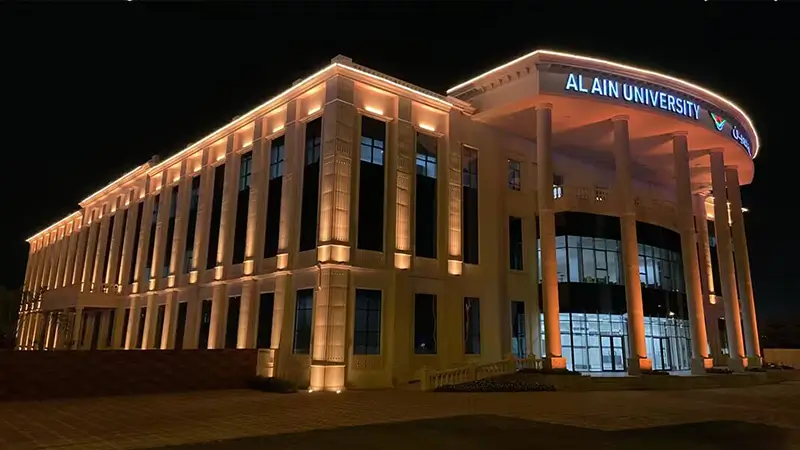
Retail Store
Retail store lighting is all about lighting up every place. The ideal light is one where the product can be seen clearly and glare needs to be minimized. Narrow beam angles and multiple bulbs are therefore preferred.
Jewelry Shop
The light of the jewelry store is mainly to highlight the characteristics of the product. So it is better to use a narrow beam angle of less than 10° in the display case.
Dining Room
Restaurants are more about aesthetics and mood lighting. Many restaurants typically stay open from early evening until late at night, so tend to avoid brightly lit environments. A beam angle of 25° is recommended for dining tables.
Work Area
Office space has high requirements for lighting. Because poor lighting may cause some employees to face harsh glare and not work properly. Additionally, employees working in front of computer screens can experience eye strain if the ambient light is too low. Office spaces, therefore, prefer a wide flood beam angle, typically around 60°.
Storehouse
Due to the high ceilings in the warehouse, a narrower beam angle is required. Of course, this is not a certainty, the exact number varies with the ceiling height.
In conclusion
The lighting beam angle is very important when choosing to light buildings. Use a wide beam angle when you need a space to be well-lit and use a narrow beam angle to emphasize an area.
Therefore, choosing the correct beam angle is critical. For example, the purpose of lighting, the height of the ceiling, the type of lamps, and other factors. And explore the range of beam angle options to make an informed decision.
FAQs
Common beam angle classifications include Narrow Spot (less than 15 degrees), Spot (15-30 degrees), Narrow Flood (30-45 degrees), Flood (45-60 degrees), Wide Flood (60-90 degrees), and very wide flood light (60-90 degrees). Wide flooding (greater than 90 degrees).
For accent lighting, narrow beam angles are generally recommended. It helps to highlight a specific product, architectural feature or artwork by directing a concentrated beam of light onto the target.
For general indoor lighting, wider beam angles are preferred. In order to provide uniform lighting over a larger area, each area is guaranteed to have light.
Yes, impact. Narrower beam angles tend to concentrate the light, making the target area appear brighter.
The beam angle of a fixed light source cannot be adjusted. Some specialty fixtures are adjustable, such as adjustable spotlights or track lights, allowing you to manually modify the beam angle to meet your specific lighting needs. But it is best to determine the beam angle in advance before buying the lamp.
